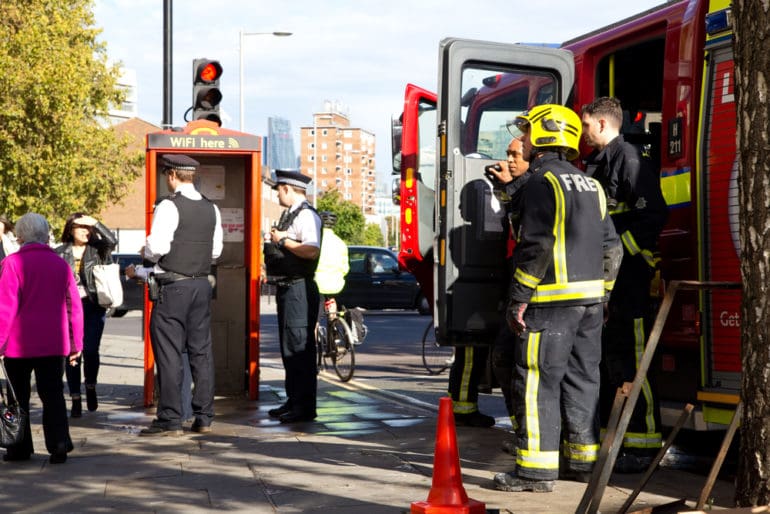Fire risk assessments are crucial for safeguarding employees, ensuring compliance with legislation and averting potential legal and safety issues.
Implementing thorough assessments forms the backbone of a robust workplace safety strategy, enabling organisations to identify and mitigate risks effectively.
Understanding the Legal Framework
The complex landscape of fire safety legislation in the United Kingdom was simplified with the introduction of The Regulatory Reform (Fire Safety) Order 2005. Enacted on 1st October 2006, this Order now forms the cornerstone of fire safety regulations for non-domestic premises across England and Wales. Its aim is to establish a minimum fire safety standard, designating a Responsible Person (RP) to oversee compliance with these regulations in workplaces, typically the employer.
For businesses employing more than five individuals, it is mandatory to conduct a written fire risk assessment. This key component dictates that the RP ensures appropriate general fire precautions are in place, further emphasising the need for regular evaluations to identify and mitigate potential hazards.
Components of a Comprehensive Fire Risk Assessment
A well-conducted fire risk assessment is multifaceted, involving several critical steps. Firstly, identification of fire hazards is paramount, along with recognising individuals at risk, such as employees and visitors. Once risks are identified, they must be diligently evaluated, with efforts made to either remove or reduce them to acceptable levels.
All significant findings and planned safety measures must be documented meticulously. This record-keeping is essential for future reference, especially during reviews or in the event of an incident. Establishing an emergency plan, alongside offering tailored training to staff, fortifies your organisation’s preparedness against fire threats.
Prioritising Key Areas in Fire Safety
There are several crucial areas demanding attention during a fire risk assessment. These include ensuring clear, accessible emergency exits and routes, the presence of appropriate fire-fighting equipment, and the installation of systems for detection and warning.
The management of hazardous substances is another priority, requiring safe storage practices. Also, provisions must account for vulnerable individuals, such as children or those with disabilities, ensuring their safety is uncompromised.
Communicating necessary fire safety information to all individuals on the premises, particularly employees, is key. Regular training sessions should be arranged to maintain a high level of awareness and efficacy in handling potential fire-related emergencies.
Seeking Professional Guidance
Carrying out a fire risk assessment is not merely a procedural formality but a critical responsibility. While local fire and rescue authorities might offer valuable advice, they are not a substitute for conducting the assessment yourself. Engaging with professionals in the field can provide clarity and insight, particularly for those new to the process.
The onus remains on the RP to ensure their workforce is safeguarded adequately. Thus, even when expert advice is sought, the RP must understand that the ultimate responsibility cannot be outsourced completely.
For those lacking the skills or the time to perform an assessment, appointing a ‘competent person’ is advisable. Such professionals are equipped with the necessary expertise to carry out a thorough evaluation, affording peace of mind that employee safety is prioritised without compromise.
Responsibilities of the Responsible Person
The designation of a Responsible Person (RP) within an organisation carries significant duties. This individual is required to implement and maintain holistic fire safety measures in line with current legislation.
Training and competence are critical, and the RP may opt to undergo comprehensive training or appoint skilled professionals to assist. The importance of regular fire risk assessments cannot be overstated, as these form the backbone of an effective fire safety strategy, ensuring ongoing compliance and employee protection.
Ensuring the presence of a structured fire safety system becomes an integral part of an organisation’s operation methodology, impacting every level from management to frontline staff.
Reassessing and Updating Fire Risk Strategies
A fire risk assessment is a dynamic, evolving process that demands periodic reassessment. Regular reviews allow for the adjustment of strategies in response to changes within the organisation or its environment.
Proactive adjustments following these reviews ensure that fire safety measures remain effective and relevant. Any alterations in building layouts, changes in personnel numbers, or updated legal guidelines necessitate a corresponding update in the fire risk assessment framework.
Such adaptability ensures that your organisation is perpetually prepared to handle fire-related challenges, safeguarding assets and humans alike.
Conclusion
Employers must never underestimate the importance of conducting a thorough fire risk assessment. It not only aligns with legal obligations but serves as a critical safeguard for both employees and assets.
Ultimately, engaging with qualified professionals and committing to regular reviews and updates of the fire safety strategy ensures strong protection against fire risks, bolstering overall workplace resilience.
The commitment to regular fire risk assessments is indispensable, serving as a cornerstone for ongoing workplace safety and legal compliance. Prioritising these evaluations not only protects employees but fortifies the organisation against unforeseen fire-related incidents.

